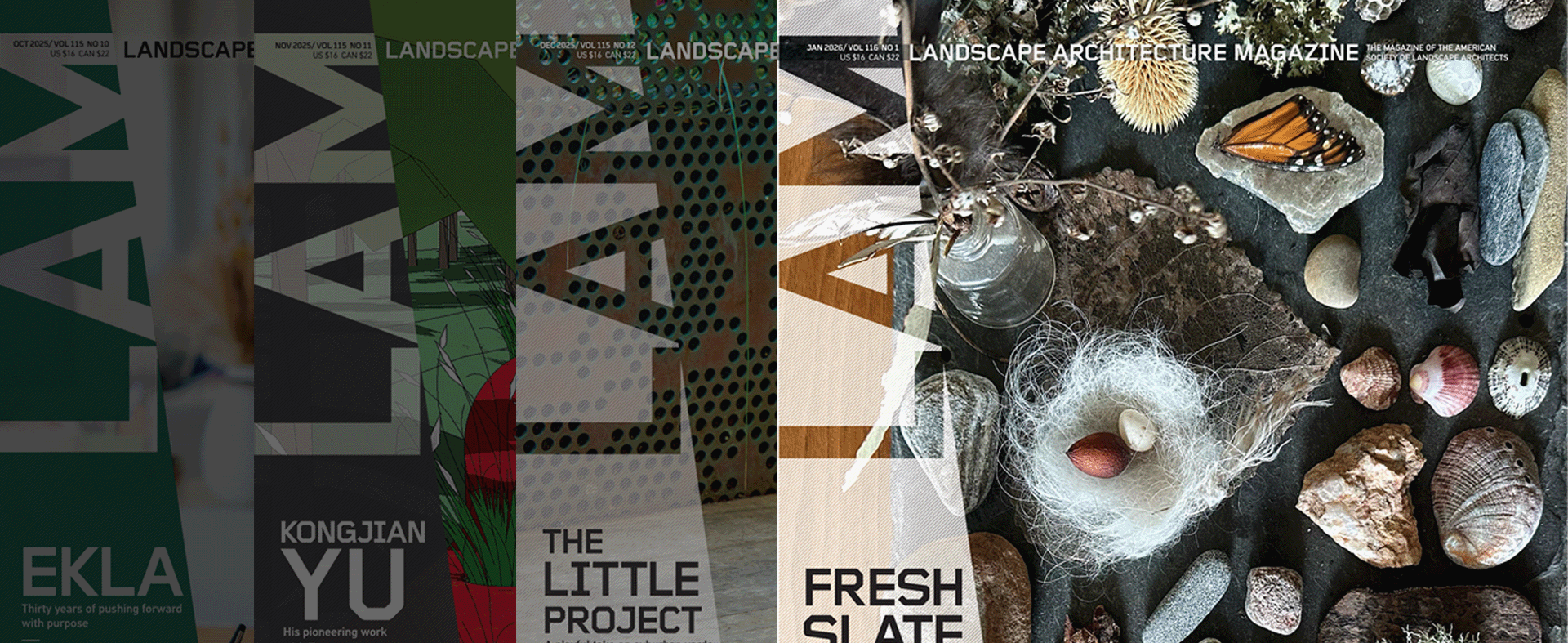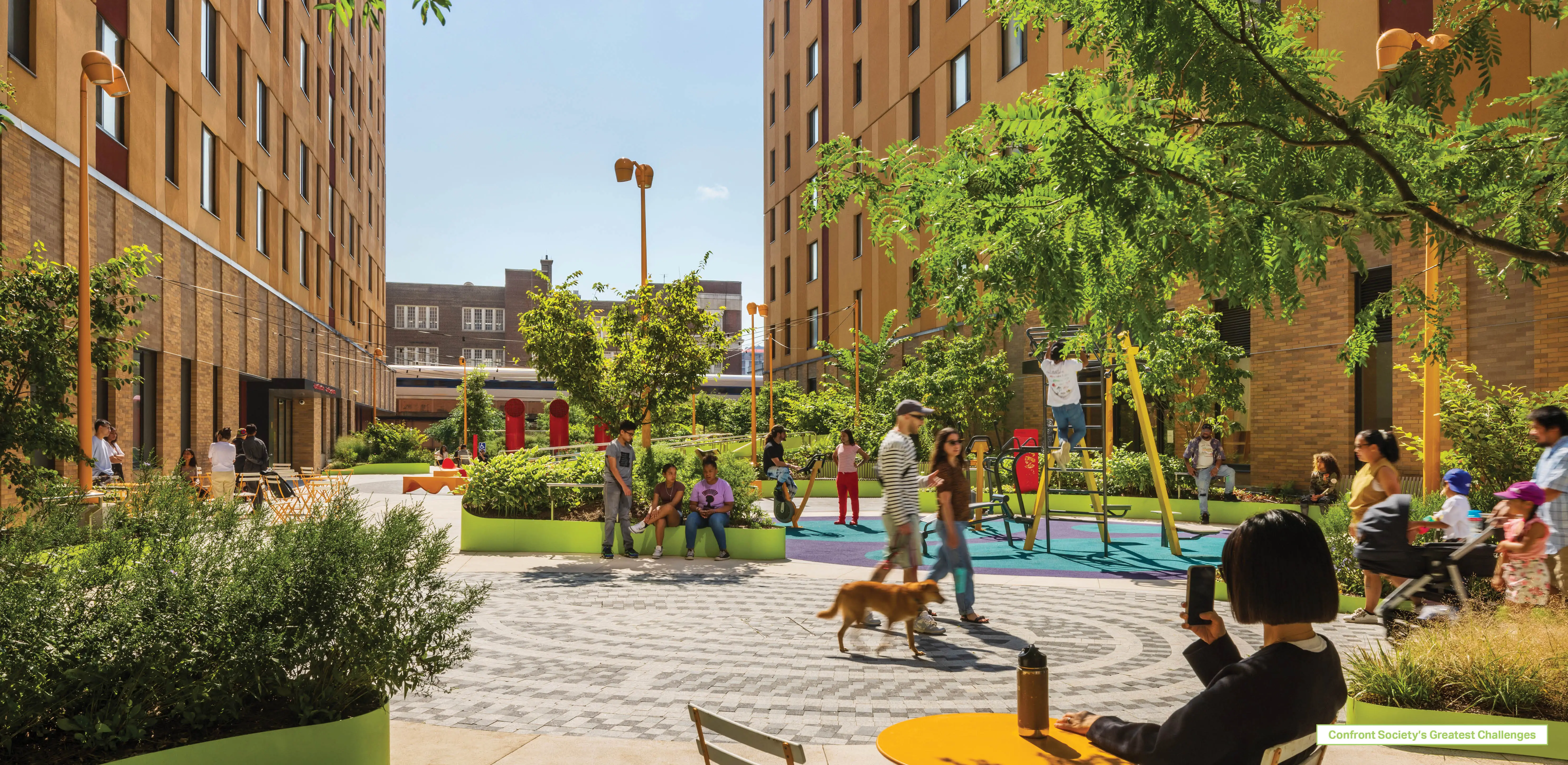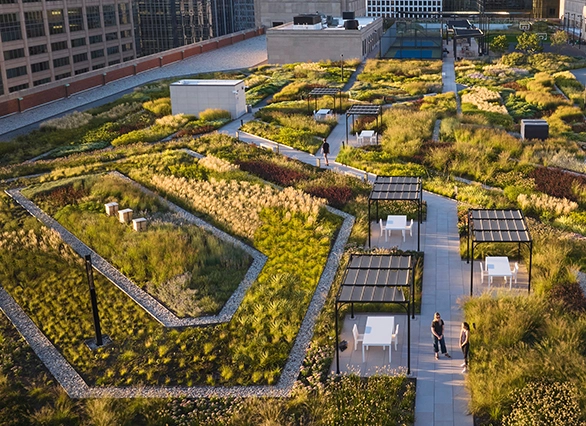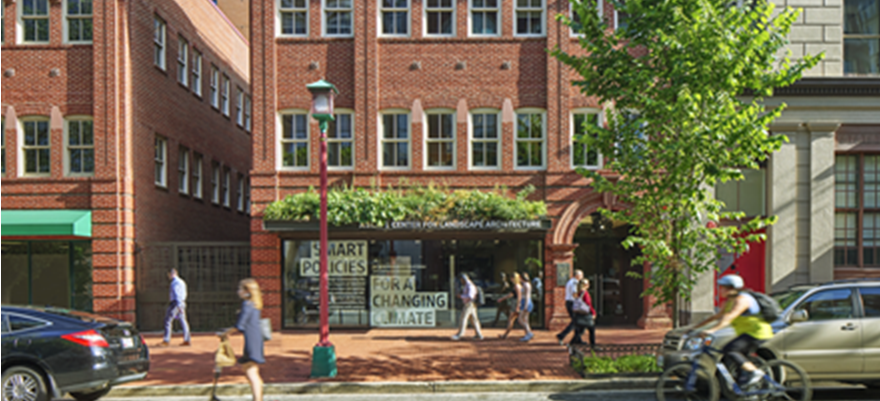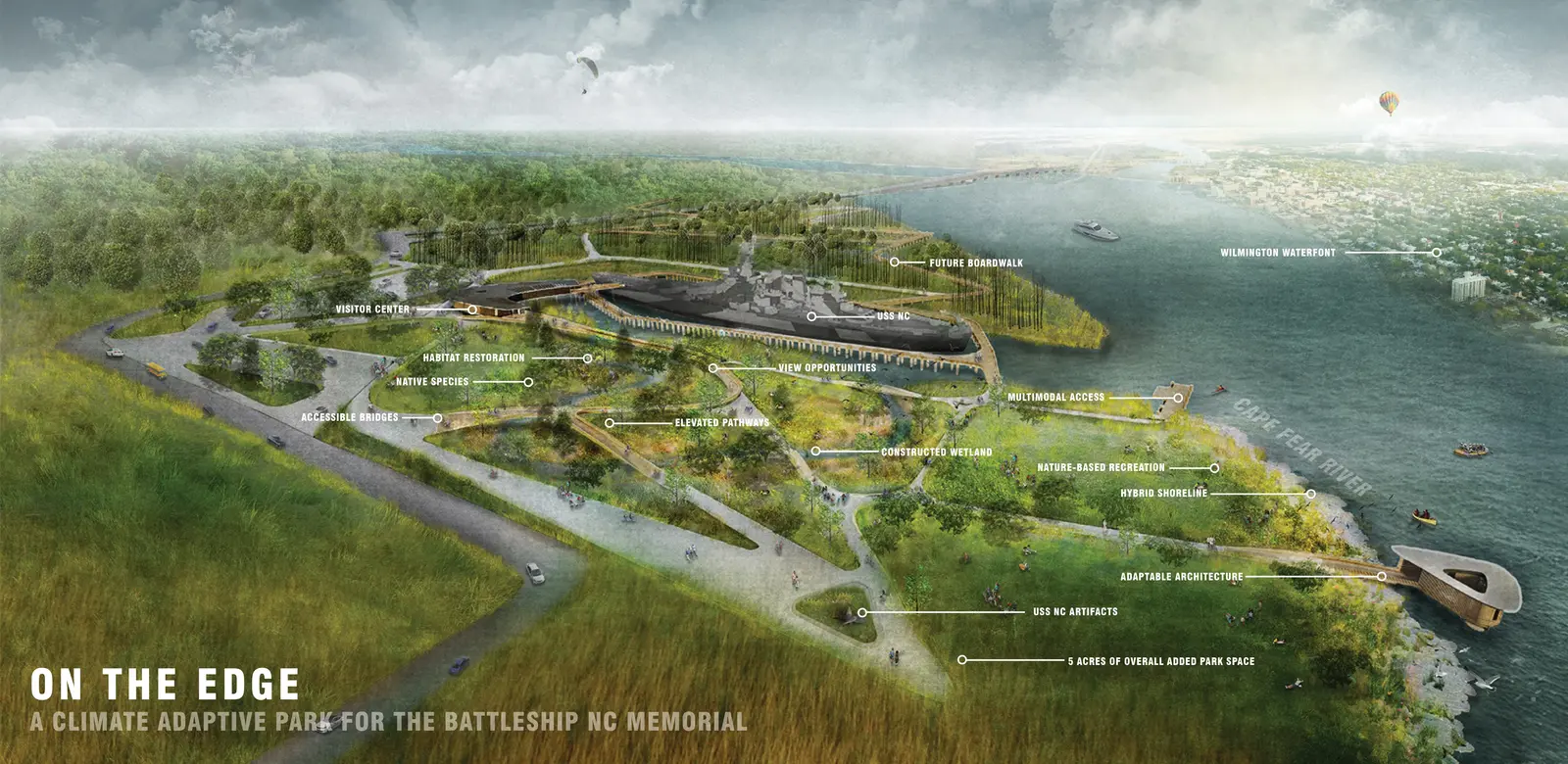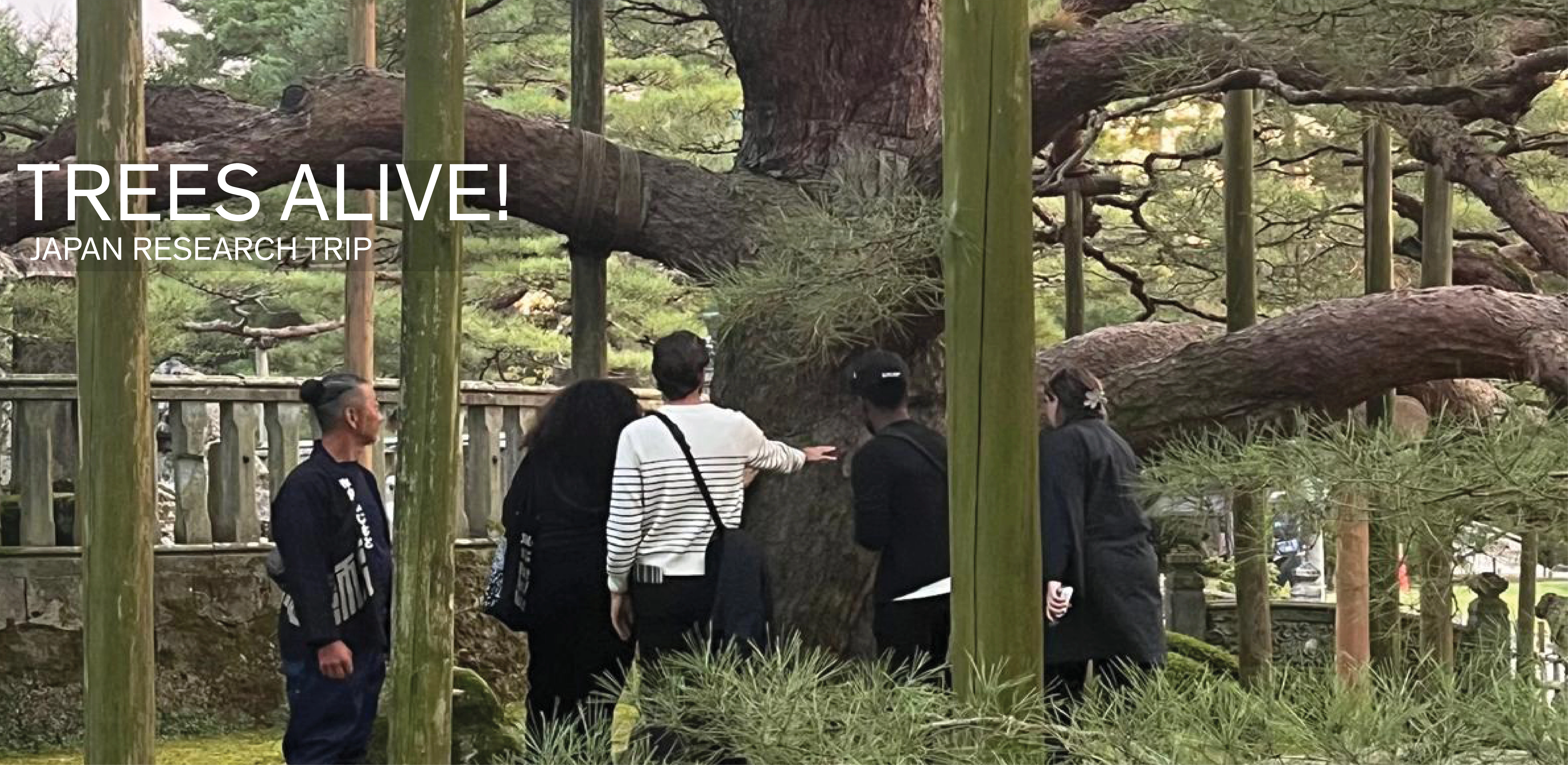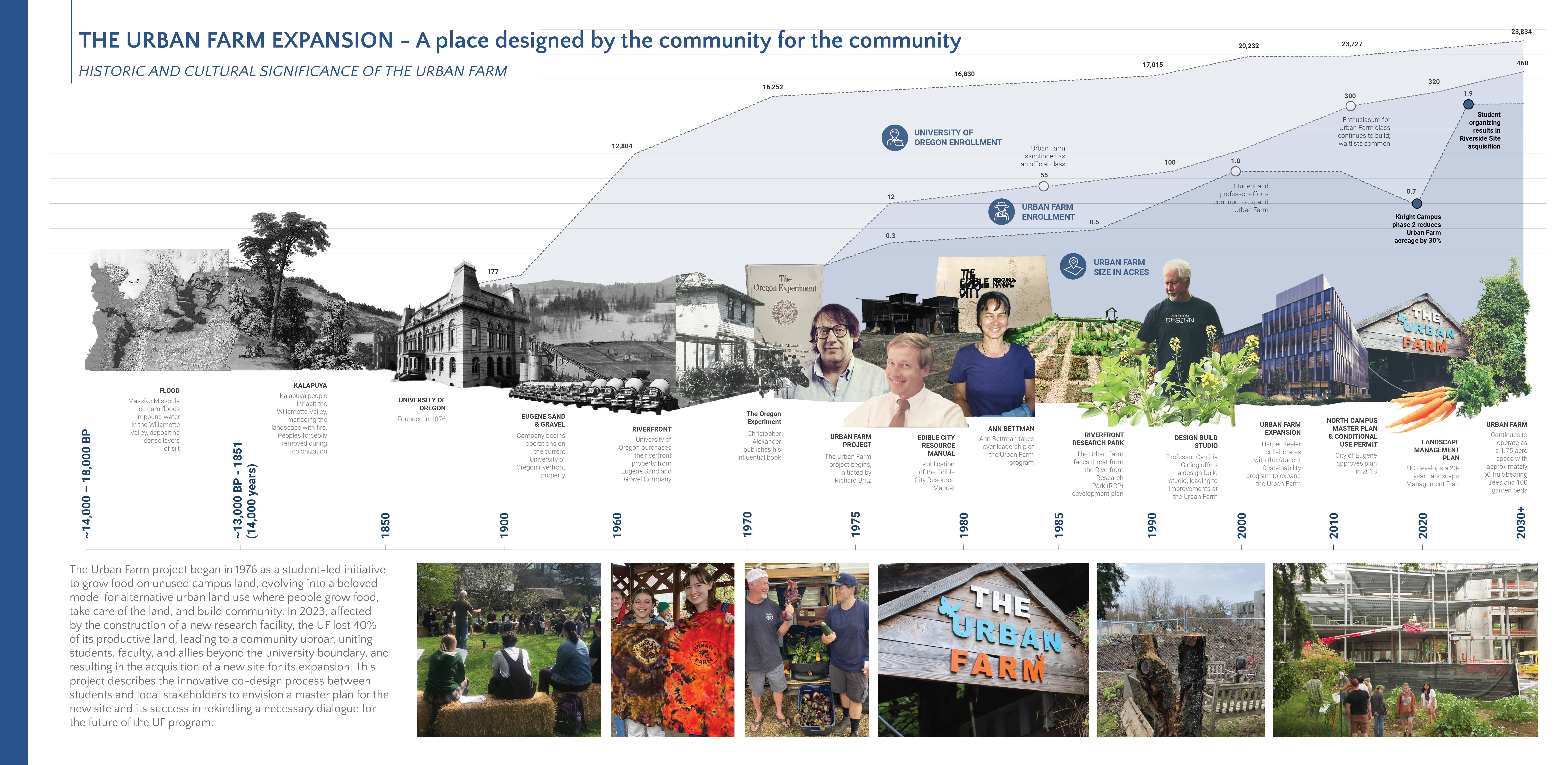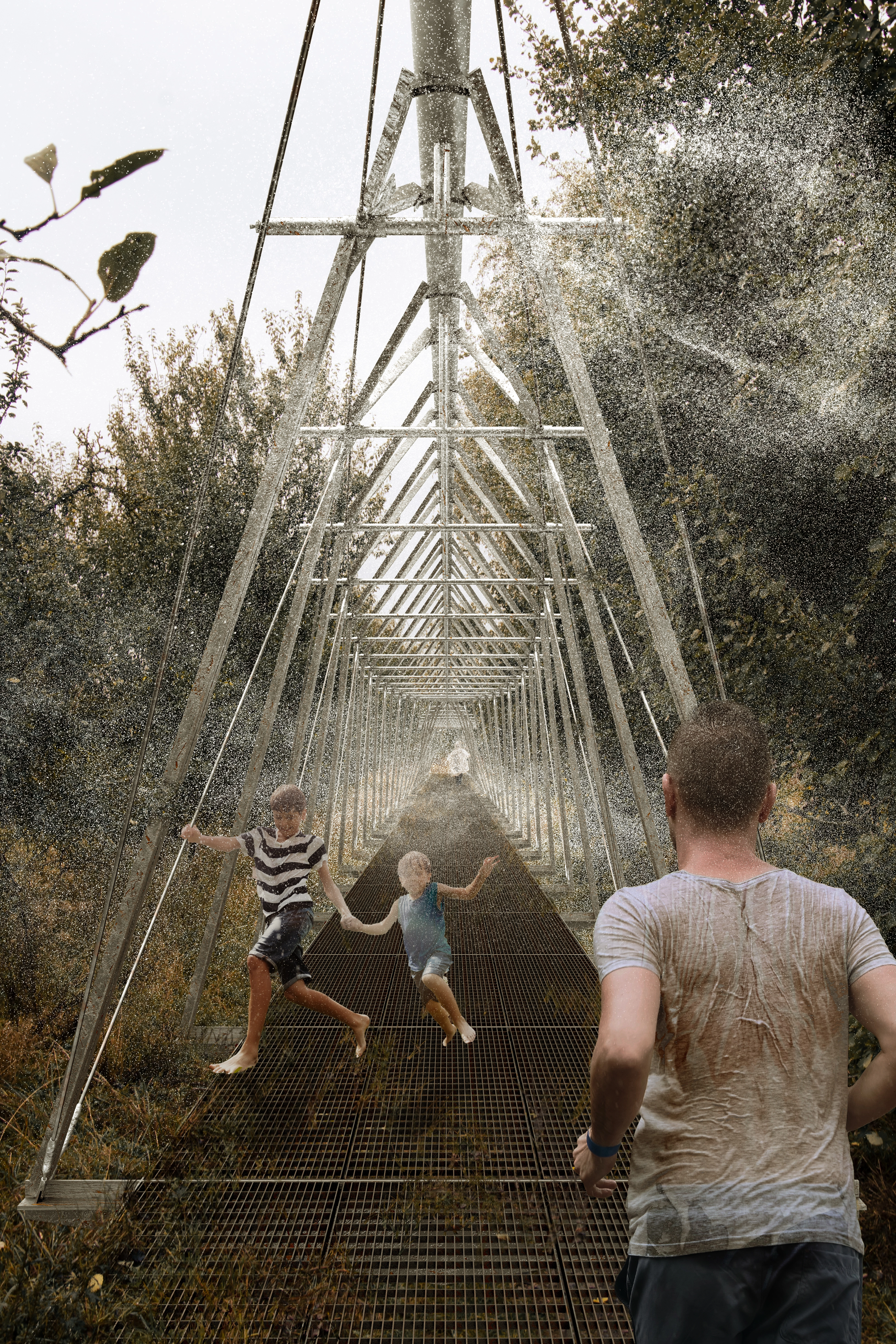On the Edge: A Climate Adaptive Park for the Battleship NC Memorial
Marguerite Kroening, Student ASLA
Stella Wang, Student ASLA
Beautiful, meaningful, and thoughtful project. Well executed and thought-out interpretation of space and the integration of sustainability
Awards Jury
-
On the Edge proposes a redesign for the parklands surrounding the Battleship North Carolina. The reimagined site celebrates a challenging narrative of place that reveal and highlight multifaceted histories while embracing infiltrating water. The new park transcends physical composition, serving as a dynamic memorial space connecting people, time, ecology, and climate through the goals of integration, adaptability, preservation, and restoration. The design proposes numerous site-specific community amenities, including a visitor center, moveable tidal pavilion, memorial bridge, and hybrid shoreline. The result is a destination park that adapts to water as the climate and site shift, allowing the memorial to withstand the test of time.
-
Battleship Park in Wilmington, NC presents a contrast between the natural and built environment. Through our experience and analysis of the site, we asked ourselves as designers how this could adapt to consider people, time, ecology, and climate more cohesively for the greater community of Eagles Island. On the Edge explores Battleship Park as a space of education through experiences of integration, adaptation, preservation, and restoration. The site’s adjacency to the USS NC and views to Wilmington highlight the need to convert the current parking lot into 5 additional acres of park space. The new design elevates portions of the site by 5 feet and depresses areas for water to escape, allowing the site to embrace water over time with the construction of wetlands and rain gardens. With the guiding principle of the path, different typologies create opportunities for rest and education. Hydrologic remembrances are revealed at points along the path, staining the timber elements to remind visitors of sea level rise. At moments where the path converges, existing memorials are placed to provide contemplation. Within these explorations, users will engage with the site’s native species; encouraging the prosperity of the site as it continues to change. Native plantings act as wildlife attractions, softening edge conditions and generating educational opportunities. The hybrid shoreline was designed with biotiles as a sustainable replacement for the rip-rap edge, generating both natural and constructed resilience against the shore while slowing down the Cape Fear River.
Between our interdisciplinary backgrounds, our team instilled a consistent design language throughout the site. We consisted of two interdisciplinary undergraduate landscape and architecture students and one masters of architecture student. We tackled site challenges through integrated design frameworks of path typologies in the public realm. These include the fluidity of the Tidal Pavilion, Memorial Bridge, and the Visitor Center; all of which are the major attractions on the proposed site. The Visitor Center creates an unobstructed view of the Battleship while providing a continuous path from the landscape. The Memorial Bridge acts as a grand entry to Battleship Park, housing different amenities for a diverse user experience. The bridge is elevated up to the Visitor Center and Battleship to allow access in future flooding scenarios. At the Tidal Pavilion, the fluid nature of the tides coexist with the structure, fusing elements of landscape and architecture and allowing it to move overtime. We utilized similar biomorphic geometries and building materials that carry a consistency from the natural to built spaces, juxtaposing the original condition of the park. The use of timber creates a visual lightness, while exploring the history of shipbuilding native to Wilmington.
Overtime, sea level rise and climate conditions will infiltrate the site. On the Edge allows users to experience amenities of the park and the Battleship as water overtakes. The future holds new experiences of architecture, landscape, and transit as our climate changes. The Battleship serves as a living memorial to people, service, and families across the country and as an important lesson of history. We envision Battleship Park to be on the forefront of design for adaptation and experience in a dynamically changing landscape, remembering people, time, ecology and climate in our future.
-
- Josh Gogan - Project Collaborator
- Claire Henkel - Project Advisor
- Terry DeMeo - Project Advisor
- Martha Eberle, ASLA - Project Advisor
- Kitti Kazay - Hydrology Researcher
- Chitali Biswas - Hydrology Researcher
- Shruthi Manivannan - Hydrology Researcher
- Gabrielle Schiltz - Hydrology Researcher
- Bohan Qian - Hydrology Researcher
-
- Goldenrod
- Pink Muhly Grass
- Broadleaf Cattail
- Switchgrass
- Swamp Chestnut Oak
- Carolina Cherry Laurel
- Eastern Red Cedar
- Little Bluestem
- Climbing Aster
- Southern Magnolia
- Black Willow
- Southern Wax Myrtle
- Bermudagrass

.webp?language=en-US)
